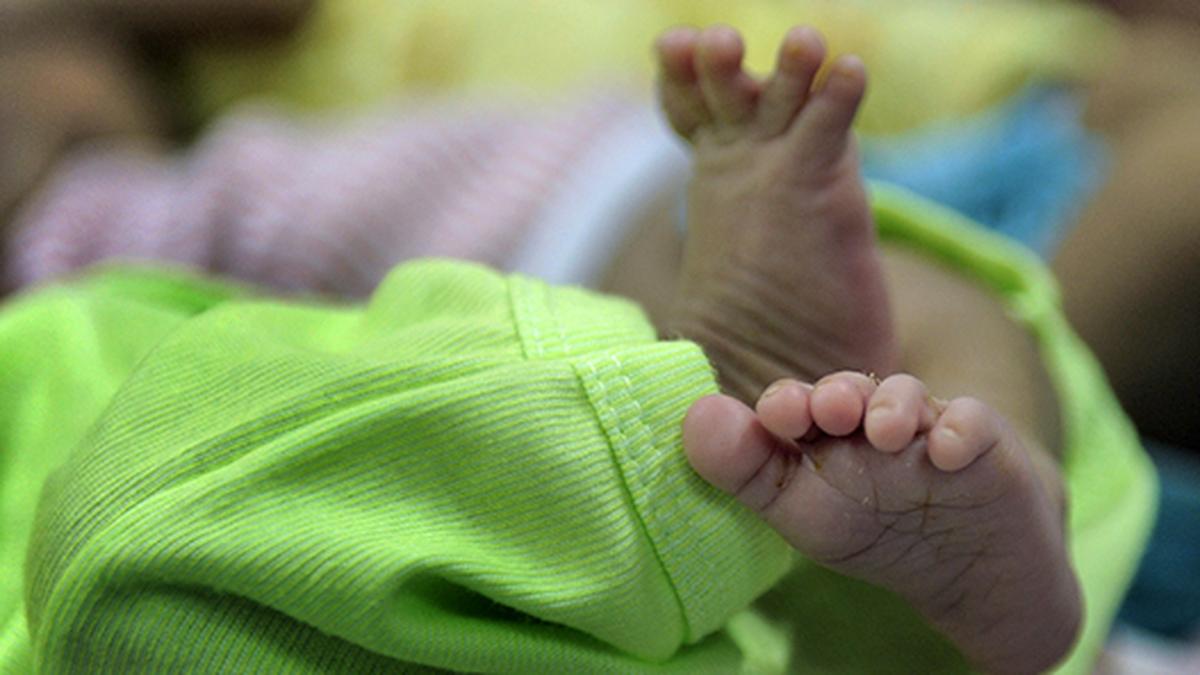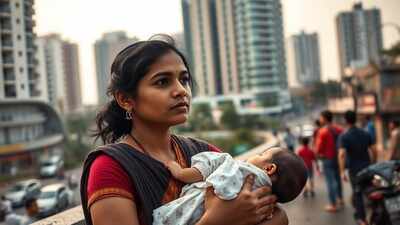Karnataka has recorded a significant decline in its fertility rate, which has now dropped to 1.5, well below the replacement level of 2.1 needed to sustain population growth. According to the latest demographic survey, this decline reflects a combination of improved education, urbanization, and widespread adoption of family planning measures. Health experts, however, caution that sustained low fertility could have profound implications for the state’s labor force, economic growth, and demographic balance in the coming decades. While declining fertility is often associated with better health outcomes, the sharp drop signals emerging challenges that policymakers must address promptly.
The decline in fertility has been particularly pronounced in urban centers such as Bengaluru, Mysuru, and Mangaluru, where increased educational attainment, higher female workforce participation, and delayed marriages are influencing reproductive choices. Rural areas, by contrast, continue to have slightly higher fertility rates, though they too are trending downward. Public health officials highlight that access to contraception, awareness campaigns, and shifting societal attitudes toward smaller families have collectively contributed to the trend. Experts note that while these developments are positive from a maternal and child health perspective, the long-term consequences of an aging population and shrinking workforce must be considered.
Economists warn that the persistent decline in fertility could lead to a demographic imbalance where the proportion of elderly citizens rises sharply relative to working-age adults. This shift may increase dependency ratios, putting pressure on social security systems, healthcare infrastructure, and public finances. The state could face labor shortages in key sectors, prompting either greater automation or the need to attract skilled migrants. Some analysts suggest that proactive policies, including incentives for childbirth and support for working parents, may be required to stabilize the population while sustaining economic momentum.

Demographic Implications and Policy Challenges
The fertility decline in Karnataka has sparked discussions among demographers and policymakers about the state’s long-term planning needs. A sustained low fertility rate could slow population growth, potentially reducing domestic demand and affecting markets for goods and services. Urban planners are concerned about the impact on future housing, education, and employment systems, particularly as the proportion of older adults increases. Policymakers are now exploring strategies to balance population stabilization with economic growth, including family-friendly workplace policies, enhanced maternity and paternity benefits, and initiatives to encourage delayed but supported childbearing.
Public health authorities emphasize that fertility decline also reflects success in maternal and child healthcare. Better healthcare access, improved nutrition, and reduced infant mortality have made families more confident in having fewer children. Family planning programs, which include widespread availability of contraceptives and counseling services, have been instrumental in helping couples make informed reproductive choices. Health officials caution, however, that these programs must now be complemented by measures to mitigate demographic aging, such as promoting adult workforce participation, lifelong learning, and flexible retirement policies.

Social and Economic Considerations
Sociologists highlight that the fertility decline is closely linked with changing societal norms, including increased female education and career orientation. Women increasingly prioritize professional growth, financial stability, and delayed marriage, which contributes to smaller family sizes. At the same time, urban lifestyles and rising living costs discourage large families. While these trends indicate social progress, they also create new challenges, including potential caregiver shortages for aging populations and evolving family support structures. Communities and policymakers must adapt to these shifts to maintain social cohesion and economic resilience.
The declining fertility rate is likely to impact Karnataka’s workforce composition, with fewer young entrants into the labor market. Sectors such as manufacturing, construction, and healthcare may face labor gaps unless mitigated through automation, skill development, or migration policies. Economists suggest that strategic planning is needed to maintain productivity levels and sustain economic growth despite a shrinking working-age population. They also note that careful monitoring of demographic trends will be critical for forecasting and planning public services, pensions, and social security programs effectively.
Rural and tribal areas of Karnataka, while showing relatively higher fertility rates, are also experiencing gradual declines due to increasing access to education, healthcare, and family planning services. Development agencies caution that these regions require tailored interventions that respect local cultural practices while promoting reproductive health awareness. Inclusive policies that bridge the urban-rural divide in reproductive health and workforce planning are essential to ensure that all segments of society benefit from demographic transition.
Experts warn that long-term fertility decline, if unaddressed, may exacerbate the economic burden on younger generations, who will increasingly shoulder the responsibility of supporting an aging population. This could lead to higher taxation, increased healthcare expenditure, and greater financial pressure on working families. Sociologists argue that without proactive measures, the social contract between generations may be strained, necessitating reforms in pension systems, healthcare coverage, and intergenerational support networks.
The decline also carries potential implications for migration policies, as a shrinking domestic labor force may prompt the state to attract skilled workers from other regions or countries. Policymakers will need to balance population stabilization with the need for economic vitality, ensuring that migration policies complement local workforce development while maintaining social harmony. Experts advocate for data-driven strategies to anticipate labor demands and design policies that align with demographic realities.
Gender dynamics play a significant role in shaping fertility trends, with women’s empowerment and reproductive autonomy directly influencing family size decisions. Increasing female education and participation in decision-making have contributed to smaller families, while also raising expectations for government support in childcare and maternity provisions. Experts argue that policies promoting gender equity, workplace flexibility, and access to reproductive healthcare will be key to addressing fertility trends responsibly, ensuring both social progress and demographic sustainability.

Ultimately, Karnataka’s fertility decline underscores the complex interplay between health, education, economic development, and societal norms. While the drop to 1.5 signals progress in reproductive health and women’s empowerment, it also raises urgent questions about the state’s demographic and economic future. Policymakers must act decisively to balance population stabilization with sustainable development, preparing for an aging society while supporting young families and maintaining economic vitality. The coming decade will be critical in shaping Karnataka’s demographic trajectory.
The fertility decline in Karnataka has sparked debates about the potential cultural and social shifts that may accompany smaller family sizes. Traditional joint family structures are gradually giving way to nuclear families, particularly in urban centers, which can affect caregiving patterns and social support networks. With fewer children to share responsibilities, families may face challenges in supporting elderly members, leading to a greater reliance on formal care systems. Sociologists warn that planning for eldercare infrastructure and services will become increasingly critical as demographic aging accelerates.
Economists also highlight the risk of a slowing domestic market due to lower population growth. Fewer young consumers could impact demand for education, housing, and consumer goods, potentially slowing economic expansion. At the same time, the quality of the workforce may improve due to better education and skill development, partially offsetting quantity-related challenges. Policymakers are urged to focus on enhancing productivity and leveraging technology to maintain economic competitiveness despite demographic constraints. Balancing these factors will be essential to sustaining long-term growth.
The healthcare system faces a dual challenge as fertility declines and the population ages. While lower fertility reduces maternal and child health burdens, an increasing elderly population will demand more chronic disease management, geriatric care, and long-term support services. Public health experts advocate for integrated strategies that address both preventive care and specialized services for older adults. Investments in healthcare infrastructure, training of geriatric specialists, and expansion of community health programs are essential to accommodate this demographic shift.
Education and skill development policies must also adapt to the changing population structure. With fewer students entering schools and colleges, institutions may need to adjust capacity, curriculum, and career guidance programs to align with labor market needs. Simultaneously, lifelong learning and reskilling initiatives will become more important as older workers remain active in the workforce longer. These adjustments are crucial to ensure that Karnataka maintains a capable and adaptable workforce capable of sustaining productivity.
Migration trends may be influenced by fertility decline, as states with shrinking working-age populations could experience labor shortages. Karnataka might increasingly rely on inter-state or international migration to fill gaps in key sectors such as IT, healthcare, and manufacturing. Policymakers will need to create frameworks that facilitate smooth integration of migrants while addressing social, economic, and cultural implications. Planning for housing, education, and social services will be critical to supporting a diversified workforce.
Ultimately, Karnataka’s demographic shift presents both challenges and opportunities. Lower fertility signals progress in education, healthcare, and women’s empowerment, yet it necessitates forward-looking policies to address aging, labor shortages, and social support systems. Strategic planning, including incentives for balanced population growth, investment in eldercare, and promotion of gender equity, will be vital. By anticipating and addressing these changes, Karnataka can transform its demographic transition into a foundation for sustainable and inclusive development.
Experts stress that proactive policy intervention is crucial to ensure that Karnataka’s declining fertility rate does not translate into long-term socioeconomic strain. Measures such as financial incentives for families, enhanced childcare support, flexible workplace policies, and awareness campaigns promoting balanced population growth could help stabilize demographics. At the same time, investments in healthcare, education, and skill development will ensure that a smaller population remains productive and economically resilient. The state’s ability to navigate this demographic transition thoughtfully will determine whether it reaps the benefits of a healthier, educated population or faces challenges associated with an aging and shrinking workforce.
Follow: Karnataka Government
Also read: Home | Channel 6 Network – Latest News, Breaking Updates: Politics, Business, Tech & More

